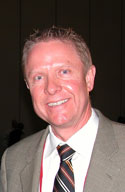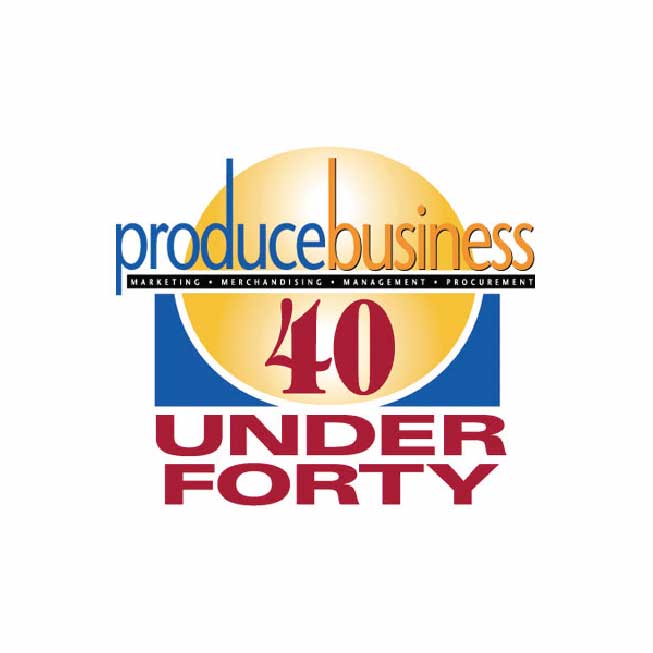Celebrating 35 Years — Vanguards Who Made a Difference: BRUCE PETERSON
September 27, 2021 | 5 min to read
Over the course of the year, we pay tribute to 35 living Vanguards and 12 departed heroes. This month’s featured Vanguard is Bruce Peterson of Walmart / Peterson Insights.
Originally printed in the October 2020 issue of Produce Business.


Walmart / Peterson Insights
It’s not easy to overstate the enormous impact that Bruce Peterson, former senior vice president/general merchandise manager of perishables at Walmart, has had on the produce industry’s growth — starting with his influential prowess in building the largest retail produce operation in the world.
“Bruce spent more than a decade making massive changes to the way Walmart and the industry looked at creating stronger relationships between retail buyers and suppliers,” says Bryan Silbermann, former president of the Produce Marketing Association. “Bruce once said to me that once Walmart’s growth plans were reached, the challenge for him wouldn’t be deciding from whom to buy, it would be assuring the company that he could actually procure so large a consistent supply of product.”
For perspective, when Peterson left Walmart in 2007, the company was buying more than two shiploads of Chiquita bananas a week, according to Peterson.
“In one sense, his leadership of Walmart’s expansion in produce and then fresh foods more broadly rewrote the rules of buyer-seller partnerships. Ensuring consistent supply and stabilizing price fluctuations became the hallmarks of his time at Walmart,” says Silbermann.
Peterson jockeyed to adopt Walmart’s general merchandising model of contracting and co-managed replenishment systems to the produce industry.
For context, when Peterson came to Walmart in 1991 to interview with Sam Walton, it had six supercenters, no distribution centers, no perishables transportation. “It was buying produce from Fleming, the grocery wholesaler at the time. Walmart was a general merchandise retailer, focused on total groceries — what they call consumables, things like Tide and paper towels and cookies,” says Peterson, noting, “They did sell some produce in Sam’s Clubs, but not a whole lot of it.”
Peterson, originally from Michigan, had worked on the wholesale market in Detroit, and more crucially for seven years at Meijer, whose operations had many similarities to what Sam wanted to accomplish. He had recently joined Bakers, a 10-store chain in Omaha, NE, when he got the life- and industry-altering call from Walmart. “I was doing more business in produce in this nice little chain than Walmart was doing in those supercenters,” says Peterson. “To put it into context, you had the Kroger Company… you had Safeway… which was a national chain… Albertson’s was a pretty big deal, and, of course, Food Lion was going like crazy. And that was just in the United States,” says, Peterson, adding, “You still had Tesco and Carrefour and these international chains, and Sam Walton said we’re going to be the largest grocery chain in the world in 10 years. I remember coming out of that interview thinking, what the heck am I getting myself into?”
Creating fresh produce departments in these new supercenters would be key to drive more frequent consumer visits and make them a one-stop shopping experience that went far beyond the general merchandise approach of the old Walmart.
When Peterson left Walmart in 2007, it had 2,473 Supercenters, 110 Neighborhood Markets, plus it had perishables in its regular Walmart stores, and 45 distribution centers. “That kind of growth had never been done in the history of the supermarket industry, and it will never be done again,” speculates Peterson, noting, “We were opening 250 stores in a day.”
In an audacious move, Peterson jockeyed to adopt Walmart’s general merchandising model of contracting and co-managed replenishment systems to the produce industry. “Nothing like that had ever been done before,” he says, acknowledging, “we were learning on the fly. Contracting produce was kind of a foodservice thing back in the early days, and on the retail side it usually didn’t work very well. It’s really a testament to a lot of the suppliers we were doing business with early on that helped us reform and refine that model,” he says. “We were the first major retailer to do long-term produce contracts on a large scale.”
What a lot of people and businesses take for granted now didn’t exist when Peterson came on board at Walmart. “We built the entire infrastructure to cause these supply chain efficiencies to happen. It enabled us to grow as fast as we did,” says Peterson. Walmart’s infrastructure broadly spurred transformations and streamlining of produce supply chain systems toward future growth, with other companies emulating the model and developing competitive platforms.
While Peterson was busy reinventing Walmart, he was also committed to industry leadership and working collaboratively to solve industry-wide issues. “He understood the need for employee training early on,” says Silbermann. “Technology was obviously a driving force behind the changes he implemented to ensure that the logistical challenges of moving so much produce through so many distribution centers could happen consistently. When food safety became a much bigger issue for the industry, he again took lead roles — especially when it came to consumer education on safe handling.”
In the context of food safety, Peterson proselytized traceability, and upon leaving Walmart, his first venture was with Mike McCartney of QLM Consulting to establish a global produce traceability strategy, working behind the scenes to help effect industry change, when PMA, CPMA and United joined forces for a bold Produce Traceability Initiative.
Bound to the industry, Peterson later became president and CEO of Naturipe Farms, and then as a consultant, where he remains a sounding board for industry executives, who never stop calling him for advice and direction, and he happily obliges.
Peterson spent some 14 years actively involved in PMA on a task force or on boards, as the chairman and also as the executive chairman. He also lobbied government, while representing Walmart as a big buying interest, and he was able to educate key law makers and government agencies on a lot of important issues in the produce industry.
Peterson also understood how fresh produce and the Walmart quality/value proposition with Every-Day Low-Pricing were indomitably tied to the company’s success. Back in the 90’s, Chiquita was one of the top 10 brands in the world. So, it wasn’t just a matter of having the best price on bananas. “It supported our national brand strategy,” he says, noting, “In the entire time I was at Walmart, the single, Number 1 volume item in a supercenter, the entire supercenter was bananas — more than tires, more than clothes, more than electronics. That’s how important it was,” says Peterson.
Walmart also was a pioneer in RPC’s, along with HEB, when no other retailers were interested. Walmart used its retail weight, explains Peterson, to break new ground in RFID technology advancements by incorporating the technology via RPC’s for produce, with the idea that you would ultimately know where everything is at any point in the supply chain. And while that initial RFID effort got derailed, primarily by costly roadblocks, such efforts were the forebearer of a lot of the things that are going on today.
“When you look at all the supply chain initiatives happening at retail and in the industry in general, a lot of it was based on the knowledge and the foundational efforts that we did back in the early days at Walmart,” says Peterson.

